Doctor Who: Terror Of The Autons, Part 1
 The 279th episode of Doctor Who airs on BBC1. Katy Manning makes her first appearance as the Doctor’s new companion, Jo Grant. Richard Franklin joins the cast as new UNIT regular Captain Mike Yates, and the Master makes his first appearance in the series, as played by Roger Delgado. Michael Wisher guest stars.
The 279th episode of Doctor Who airs on BBC1. Katy Manning makes her first appearance as the Doctor’s new companion, Jo Grant. Richard Franklin joins the cast as new UNIT regular Captain Mike Yates, and the Master makes his first appearance in the series, as played by Roger Delgado. Michael Wisher guest stars.
More about Doctor Who in the LogBook
Order VWORP!1 from theLogBook.com Store

 The 13th episode of Gerry Anderson’s live-action UFO series airs on ITV, starring Edward Bishop and Michael Billington. Suzan Farmer and George Sewell guest star.
The 13th episode of Gerry Anderson’s live-action UFO series airs on ITV, starring Edward Bishop and Michael Billington. Suzan Farmer and George Sewell guest star.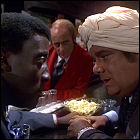 NBC premieres the
NBC premieres the  ABC airs the 14th episode of the modern-day science fiction series The Immortal, starring Christopher George. Sal Mineo and Iron Eyes Cody guest star.
ABC airs the 14th episode of the modern-day science fiction series The Immortal, starring Christopher George. Sal Mineo and Iron Eyes Cody guest star. The
The  NBC premieres the
NBC premieres the  The
The  NBC premieres the
NBC premieres the  The
The  The
The 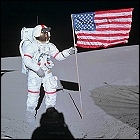 After nearly a year of examining the problems that nearly doomed the crew of Apollo 13, the third lunar landing is achieved by the crew of
After nearly a year of examining the problems that nearly doomed the crew of Apollo 13, the third lunar landing is achieved by the crew of  A simple accidental tape swap at the Emergency Broadcast System‘s point of origination at NORAD replaces a routine Saturday morning EBS test with an actual emergency message involving a national emergency and an imminent message from the White House. In accordance with FCC rules, numerous radio and television stations across the country interrupt their programming in anticipation of news of a national emergency that isn’t actually happening. The situation is corrected within an hour, though questions about the effectiveness of the EBS linger at the local and national levels.
A simple accidental tape swap at the Emergency Broadcast System‘s point of origination at NORAD replaces a routine Saturday morning EBS test with an actual emergency message involving a national emergency and an imminent message from the White House. In accordance with FCC rules, numerous radio and television stations across the country interrupt their programming in anticipation of news of a national emergency that isn’t actually happening. The situation is corrected within an hour, though questions about the effectiveness of the EBS linger at the local and national levels. The
The  The
The 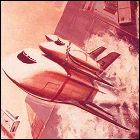 Potential contractors for NASA’s upcoming Space Shuttle offer specs based on their final design studies, which still assume that the shuttle’s giant booster will be a manned, winged vehicle in its own right that will return to a runway on Earth after its fuel is used up. One thing that both studies suggest, however, is an aluminum airframe which requires a shift away from the ablative metallic heat shields of the Mercury, Gemini and Apollo programs. A system of carbon-reinforced “shingles” is suggested as an alternative, and is approved by NASA, though developing the technology to create, install and maintain these tiles delays the first Shuttle launch into the 1980s, and the tiles are still prone to damage during both launch and re-entry – a weakness that will eventually seal the end of the Space Shuttle era.
Potential contractors for NASA’s upcoming Space Shuttle offer specs based on their final design studies, which still assume that the shuttle’s giant booster will be a manned, winged vehicle in its own right that will return to a runway on Earth after its fuel is used up. One thing that both studies suggest, however, is an aluminum airframe which requires a shift away from the ablative metallic heat shields of the Mercury, Gemini and Apollo programs. A system of carbon-reinforced “shingles” is suggested as an alternative, and is approved by NASA, though developing the technology to create, install and maintain these tiles delays the first Shuttle launch into the 1980s, and the tiles are still prone to damage during both launch and re-entry – a weakness that will eventually seal the end of the Space Shuttle era. The
The  Carole King’s career-making album
Carole King’s career-making album 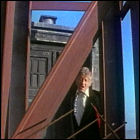 The
The 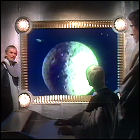 The
The